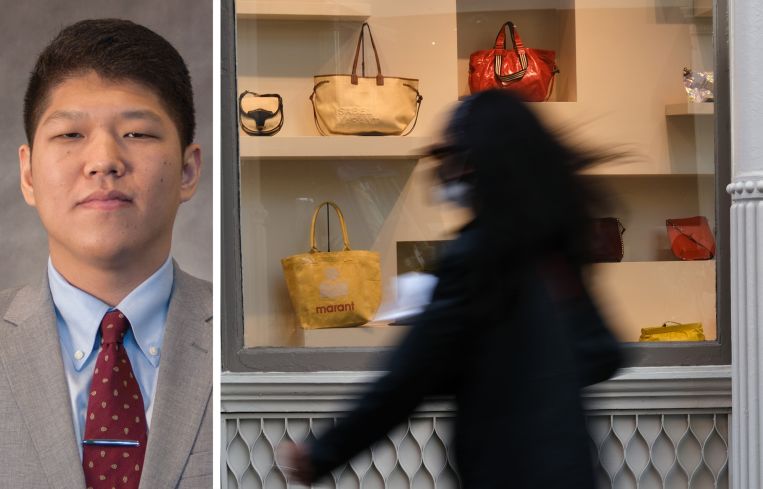Manhattan’s Retail Market Sees High Leasing in Q1 But Tariffs Could Upend It
By Isabelle Durso April 8, 2025 6:18 pm
reprints
Manhattan’s retail market saw a relatively successful first quarter in 2025, but new tariffs under the Trump administration could throw a spanner in the works for the next quarter.
The first quarter’s rolling four-quarter leasing volume, which measures total leasing for the past 12 months, was more than 3.5 million square feet, a 14 percent increase year-over-year, according to a recent report from CBRE. First-quarter leasing volume also was 7 percent greater than the fourth quarter of 2024, the report found.
Food and beverage tenants were the primary driver of that leasing, with more than 171,000 square feet leased across 39 transactions in that category during the first quarter, CBRE found.
As for which neighborhood saw the most deals completed during the first quarter, the Upper East Side came out on top with 13 transactions totaling more than 53,000 square feet. The largest of those deals was Brooklyn-based Dumbo Market’s lease for about 13,000 square feet at 1237 Second Avenue, according to CBRE.
“This quarter, we just saw a lot of activity, and the Upper East Side had some of the highest activity we’ve seen in a long time,” Hiro Imaizumi, a research manager with CBRE’s New York tri-state retail research group, told Commercial Observer.
“I think retailers are trying to go to these new markets that they haven’t seen before,” Imaizumi added. “There’s been a great shift towards trying to reach consumers where they live. And that’s why the Upper East Side and areas like Chelsea are slowly starting to see a lot of activity pick up.”
Meanwhile, the number of direct ground-floor availabilities across Manhattan declined 3 percent, dropping from 194 in the fourth quarter to 188 in the first quarter of 2025, according to CBRE. That drop was largely driven by a “flurry” of leases signed along the Upper East Side’s Third Avenue corridor, including the leasing of 1058 Third Avenue to a new nail salon.
In addition, the average asking retail rent in Manhattan was $659 per square foot during the first quarter, a 5 percent decrease from the previous quarter and a 4 percent decrease year-over-year, CBRE found.
“New-to-market retailers” leasing their first brick-and-mortar locations in Manhattan also accounted for approximately 29 percent of the quarterly leasing volume, representing more than 205,000 square feet of the deals closed during the first quarter, according to CBRE.
One of those transactions was immersive arts and entertainment company Meow Wolf’s nearly 75,000-square-foot lease for a massive new art exhibition at Seaport Entertainment Group’s Pier 17 in Lower Manhattan.
And while the Upper East Side saw the most deals completed in the first quarter, Chelsea was the most active neighborhood on a volume basis, with nearly 89,000 square feet leased across 10 transactions — the largest deals being grocer Trader Joe’s renewal for 29,700 square feet at GFP Real Estate’s 675 Avenue of the Americas and Powerhouse Gym’s nearly 19,000-square-foot lease at AFIAA’s 158 West 27th Street.
The demand for “top-tier” retail space remains strong going into the second quarter of 2025, but CBRE said in its report that a “lack of new inventory in prime markets has slowed the pace of transactions,” keeping retail leasing 20 percent below the record high of 4.4 million square feet leased during the second quarter of 2019.
“There definitely needs to be a little bit more inventory for retail,” Imaizumi said. “At the moment, the prime markets are so tight right now — especially in areas like SoHo, it’s very hard to find availability. So it would be nice to see new developers come in, to bring new properties with retail projects.”
Imaizumi also predicted Manhattan’s congestion pricing program, which launched in January and is staying put until the fall despite Trump’s attempts to kill it, could create “potential challenges for retailers and consumers” and increase the costs of services and goods delivered to Manhattan.
In addition, new tariffs under the Trump administration are causing hesitation among retailers to open new stores as they “wait for policy clarity,” CBRE said.
“I think at the moment, a lot of people are taking a step back and seeing where the market goes before they decide on making big decisions for new projects going forward,” Imaizumi said.
Isabelle Durso can be reached at idurso@commercialobserver.com.


